How to make a vision board in 5 steps
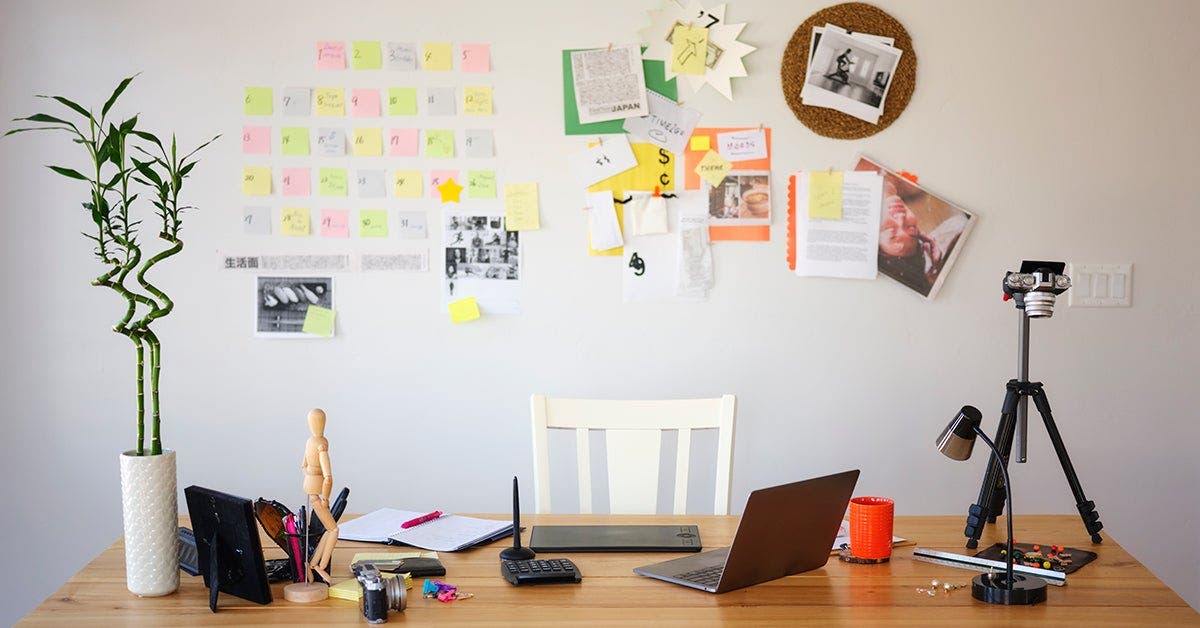

Creating a vision board, or a visual representation of something you’d like to achieve, can be a valuable part of your goal-setting journey—especially if it helps you map out and take actionable steps, says Allison Grupski, PhD, vice president of behavior change strategies & coaching on WeightWatchers® science team.
Because most experts agree that there’s a little more to goal-getting than simply staring at pictures of things you want, here’s what you need to know about vision boards to create one that’s effective for you:
How do vision boards work?
To accomplish something—no matter how small or large—you must first see what the goal is and work backwards, says Dr. Cathryne L. Maciolek, MS, PsyD, psychologist and founder of The Mandala Behavioral Health and Wellness Center in Baltimore, MD.
It’s why vision boarding should begin with visualization, or creating a mental picture of any given outcome. Setting goals around behaviors you have control over is vital to a successful vision board process, according to Dr. Ryan Niemiec, PsyD, author of the bestselling The Power of Character Strengths and education director of the VIA Institute on Character. For instance, if you have your eye on running a 5K race, setting a target such as “train every day and complete a 5K” is more likely to be successful than an outcome-focused goal such as “complete a 5K in under 35 minutes,” Dr. Niemiec says.
While you could simply keep the image of your goal in the back of your mind, visualizing via actual pictures on a vision board makes that goal more concrete, says Dr. Lisa Burton, PhD, assistant professor for counseling at Marshall University in Huntington, WV.
What’s more, because the subconscious tends to pick up on images before words, visuals tend to affect people more profoundly than, say, bulleted lists, according to Manhattan-based psychologist Dr. Chloe Carmichael, PhD. Meaning? A vision board may create a more emotional attachment between you and your goal’s outcome.
Once you identify an achievable goal, creating a vision board can provide an inspiring cue to put your action plan into motion, Grupski says.
How to make a vision board
While some people prefer the tactile method of cutting and pasting pictures from magazines onto an actual poster board, there are also online vision boards (like Pinterest) and apps (more on that below!). But before you start, take some time to reflect on what you really want to accomplish by creating a vision board, Grupski says. Does your big goal have actionable steps? Can it be broken down into daily, weekly, or monthly targets? Lofty goals are admirable, but it’s important to consider the small changes needed to reach them.
Step 1: Gather supplies.
Whether you’re into the old-school way of making a vision board using scissors, glue, magazines, and printed photos, or prefer doing things digitally, gather everything you need to get started. Going digital? Begin by choosing a website or vision board app such as:
- Pinterest: One of the most popular resources on this list, Pinterest is the ultimate vision board site. Whether you’re gathering images to “pin” to your own board, or searching for images of other vision boards to get some inspiration, it’s all at your fingertips.
- Wishboard: Washboard is a free iOS app that lets you create custom backgrounds, write text over photos, add sounds from your iTunes library, and even include voice recordings for a personalized audiovisual experience.
- iWish: This free app serves up goal ideas (you can choose from more than 700) that you can add to a “To Do” list. You can also create collages and slideshows around each goal.
- MindMovies: Take your vision boards up a notch by turning them into “movies” that include affirmations and music.
Step 2: Define your vision.
Once you decide on a goal, find a few photos or words that represent it, Dr. Maciolek advises. For instance, if you want to run a 5K, look for phrases that represent how you’ll feel once you cross the finish line. You could also add photos of your perfect race outfit and find pictures of the actual race course.
Step 3: Map out steps for achieving your vision.
After you’ve defined your main vision, decide what is needed to get to that point, Dr. Maciolek says. So if you’re poised to run that 5K, find images or words that represent the small steps toward getting there: Images of the shiny new running shoes you’re going to buy, recovery techniques like massages and bubble baths you’ll take part in, the paths you’ll practice on, etc.
Step 4: Create your vision board.
Once you’ve got all your supplies and images of both your overall goal and steps to get there, map out time to create your board in a calm environment, Dr. Maciolek advises. An added benefit of turning your vision board into a tangible art project: The act of creating visual art may lower circulating levels of the stress hormone cortisol, according to a small study of 39 healthy adults published in the journal Art Therapy.
Step 5: Put your vision board on display.
If you’ve created your vision board by hand, prop it up in a place you’ll see every day to remind you of your goal and motivate you to work toward it, Dr. Maciolek suggests. Otherwise, set your digital vision board as your phone background so you’ll always have it with you—or pull up your app to view it whenever you need a little boost.
Vision board ideas
Still stumped on how to get things rolling? Here are few creative vision board ideas for both bite-sized and more aspirational goals:
1. “Healthier me” vision board
Being “healthy” is so much more than simply lowering numbers on the scale. While physical activity and a nutritious diet are part of living a healthy life, so are social ties, positive emotions, and the ability to achieve personal aspirations, according to the Centers for Disease Control and Prevention (CDC). Use this vision board to remind yourself of the number of daily steps you want to take, the amount of vegetables you want to eat a day, the friends who support you, or specific exercise classes that help you feel good.
2. Seasonal vision board
Make this vision board all about what you’d like to accomplish over the course of your summer, fall, winter, or spring. Whether you want to learn to cross country ski or wear short shorts with confidence, achieving short-term goals—like the ones you can accomplish over the course of three months—provides more immediate rewards, which in turn can lead to sustained motivation for longer term goals, according to a 2016 meta-analysis of five studies on goal setting published in the journal Personality and Social Psychology Bulletin.
3. Couples vision board
A couple’s vision board can include shared goals you and your partner have as a unit, Dr. Burton says. These goals could include getting healthier together, saving up to buy a house, or building the perfect nursery for a new addition to your family.
Vision board examples
If you’re looking for inspiration look no further: Check out some vision board examples from the WW family:
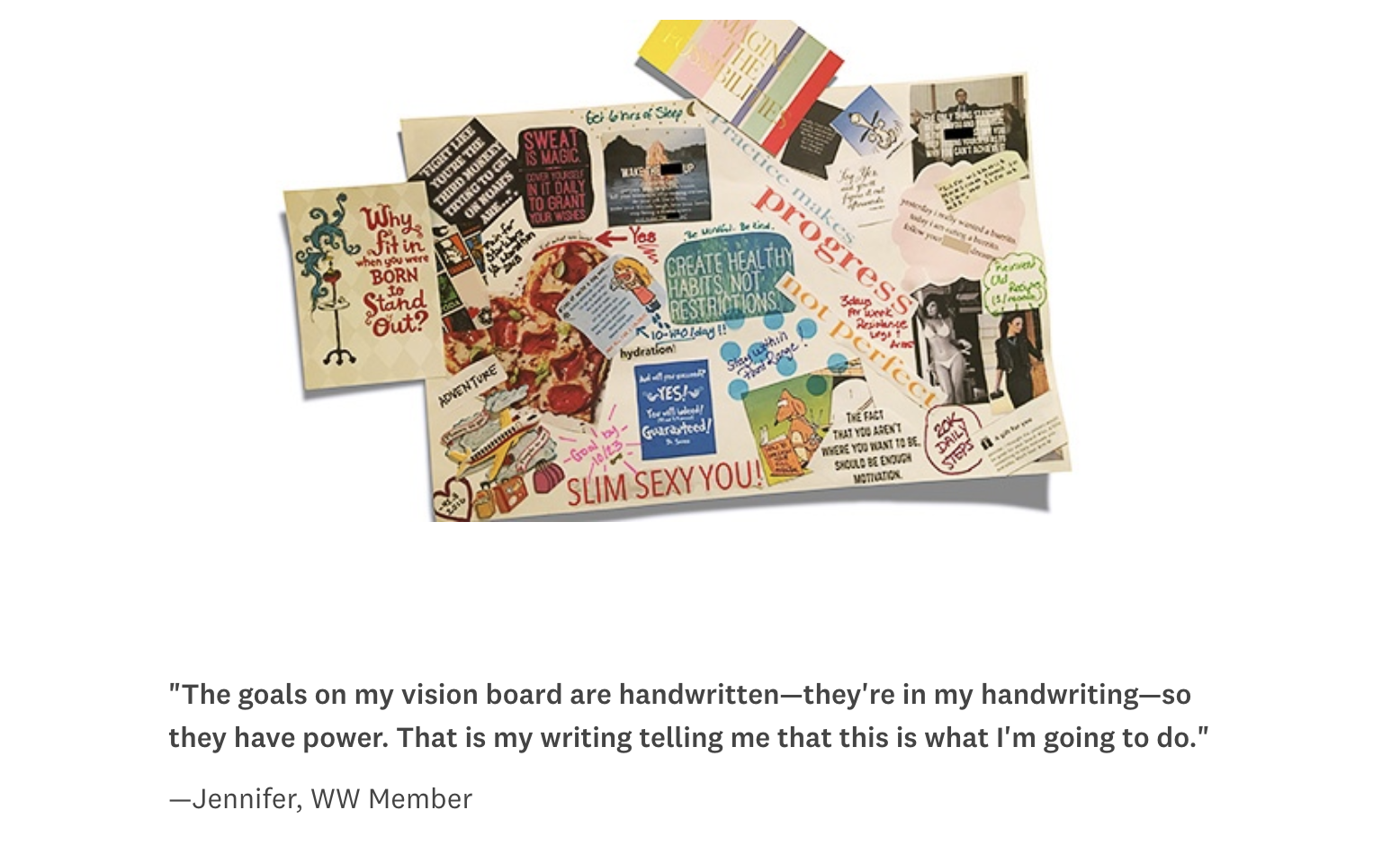
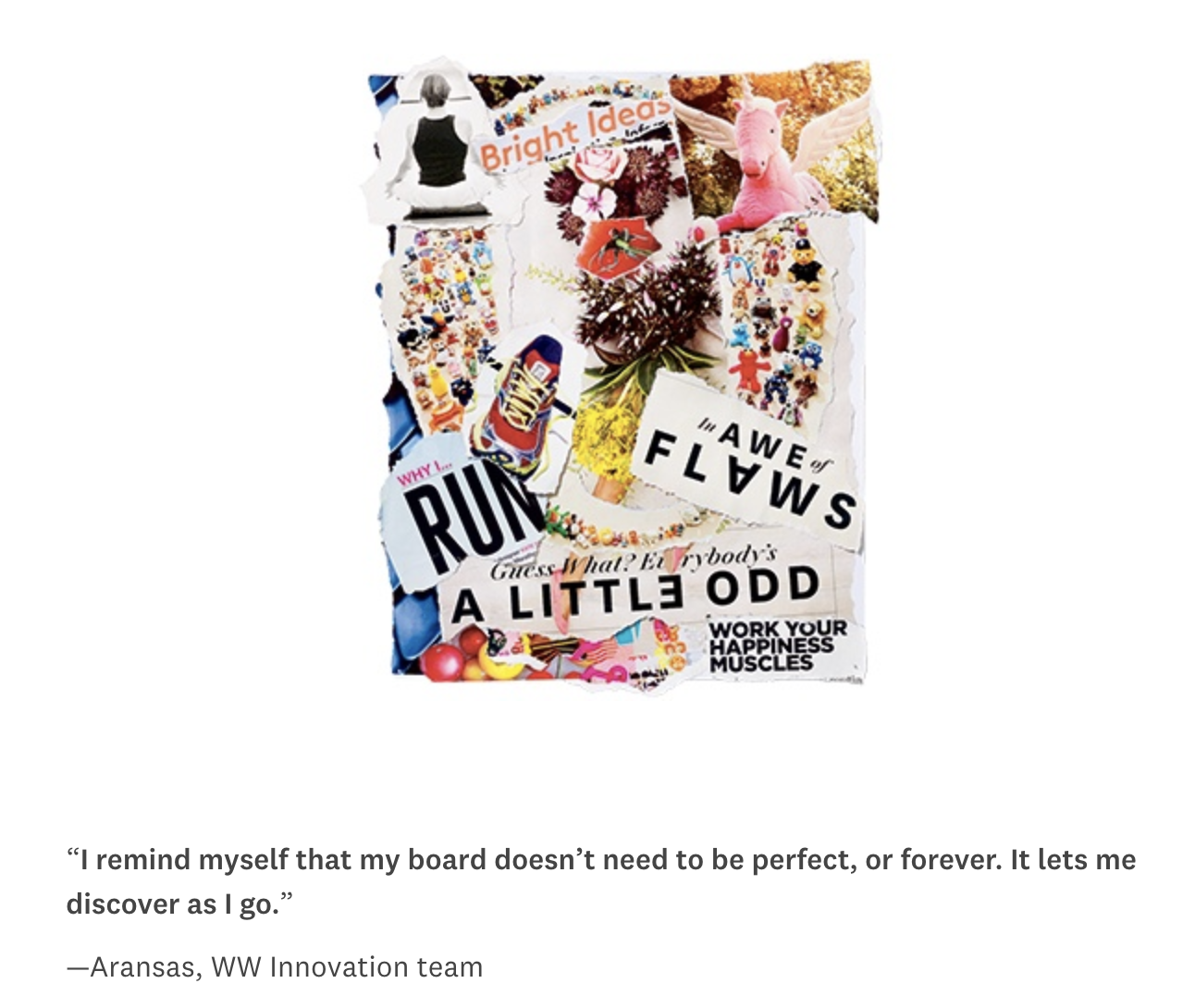
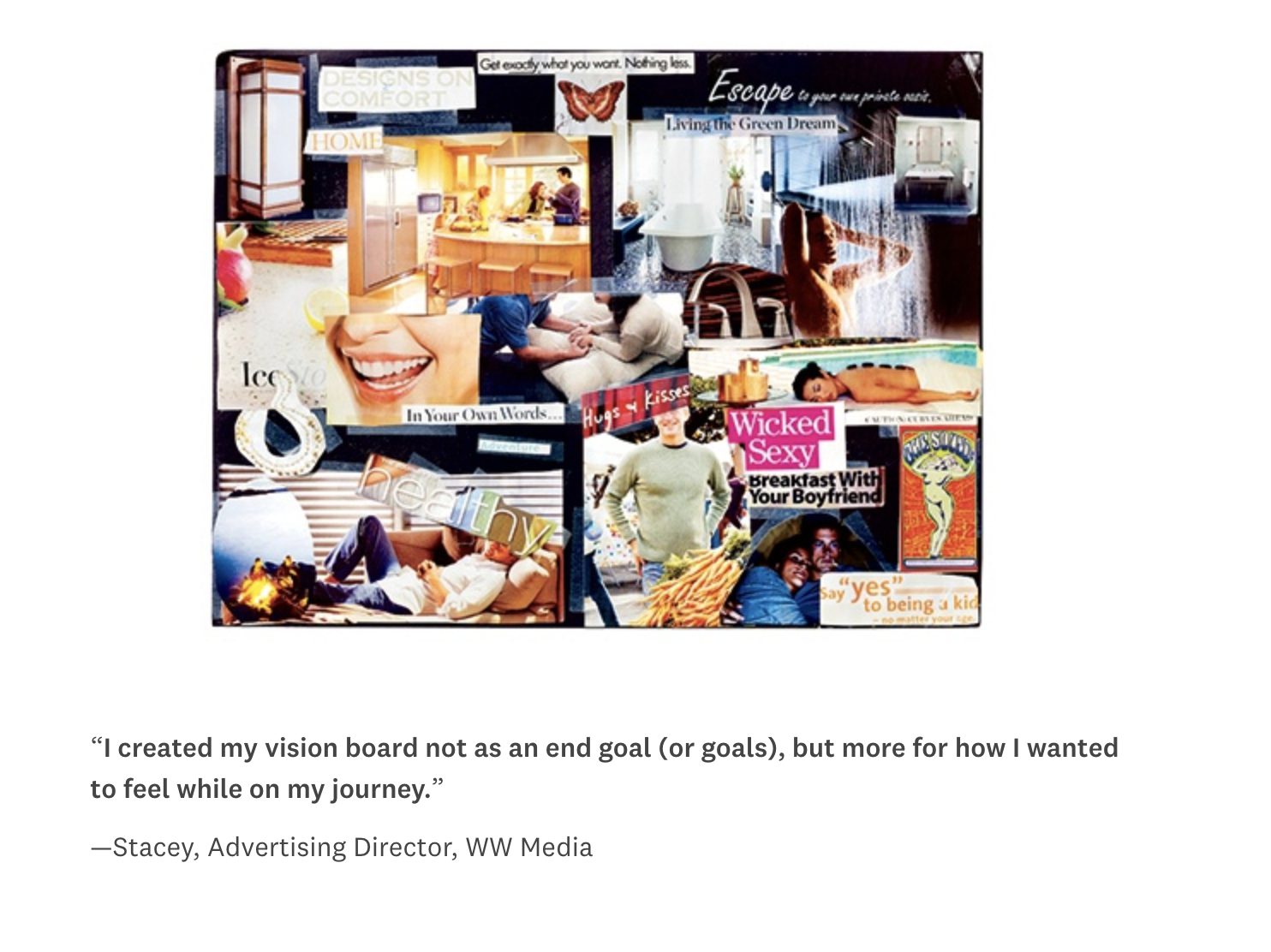
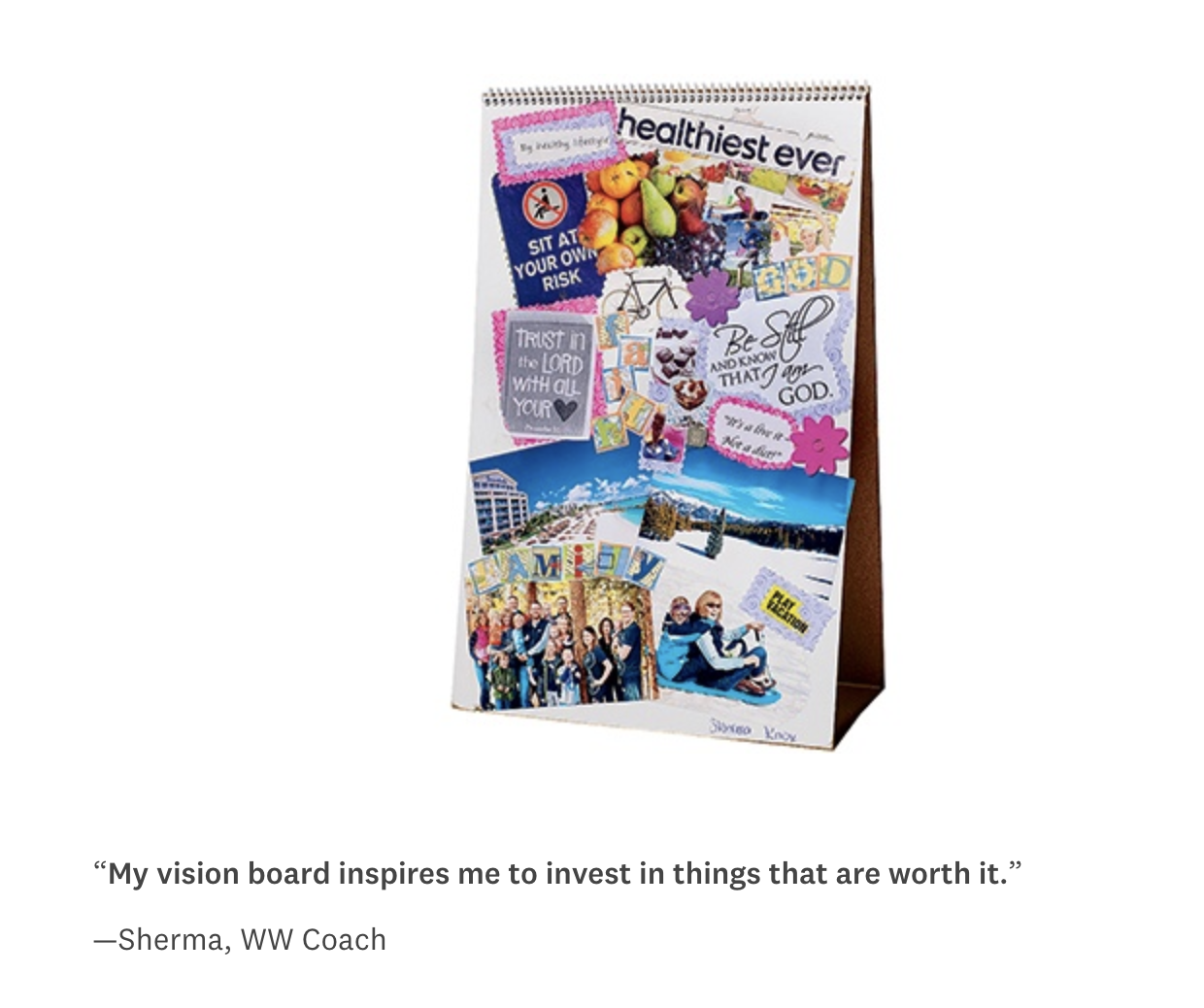
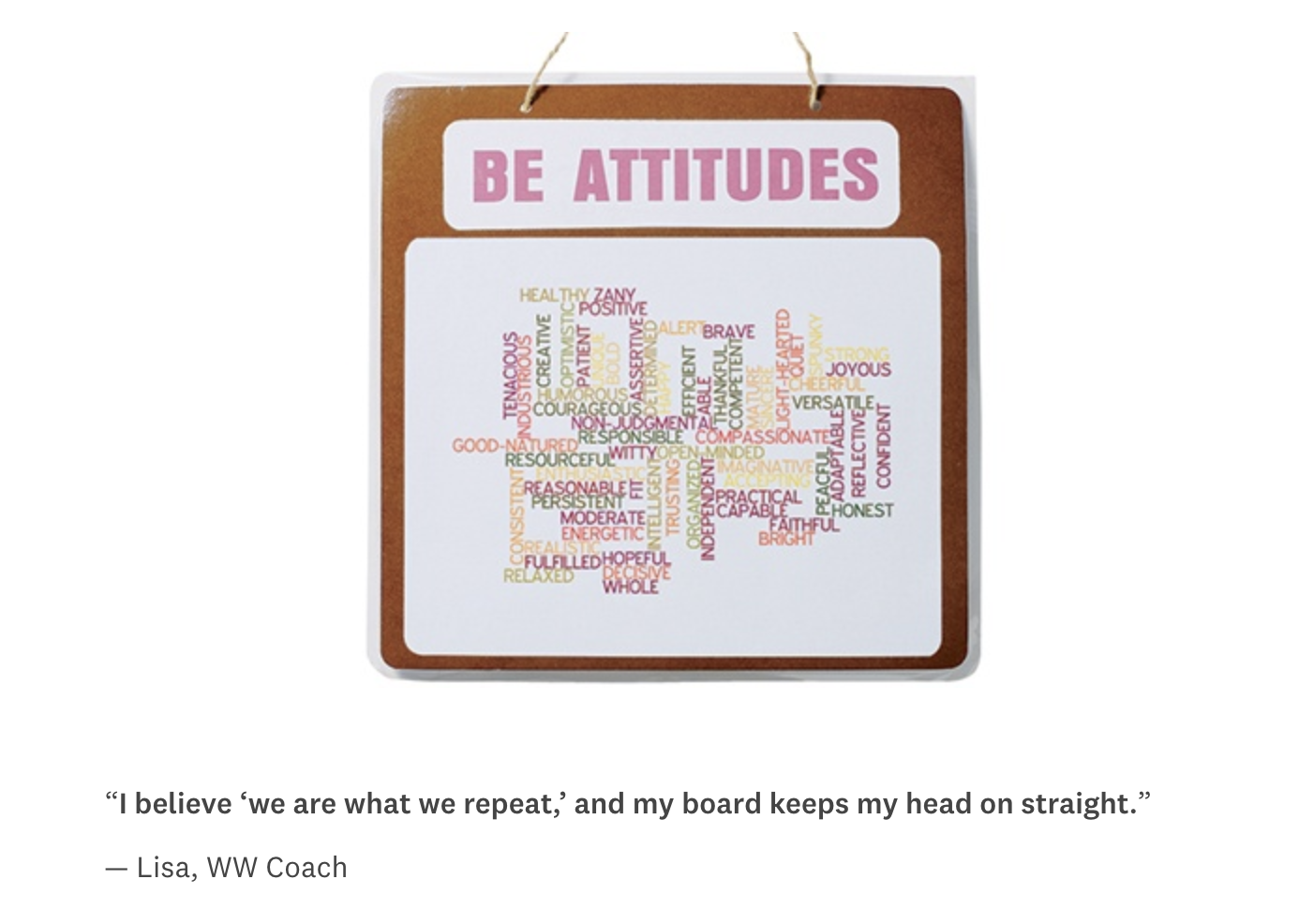
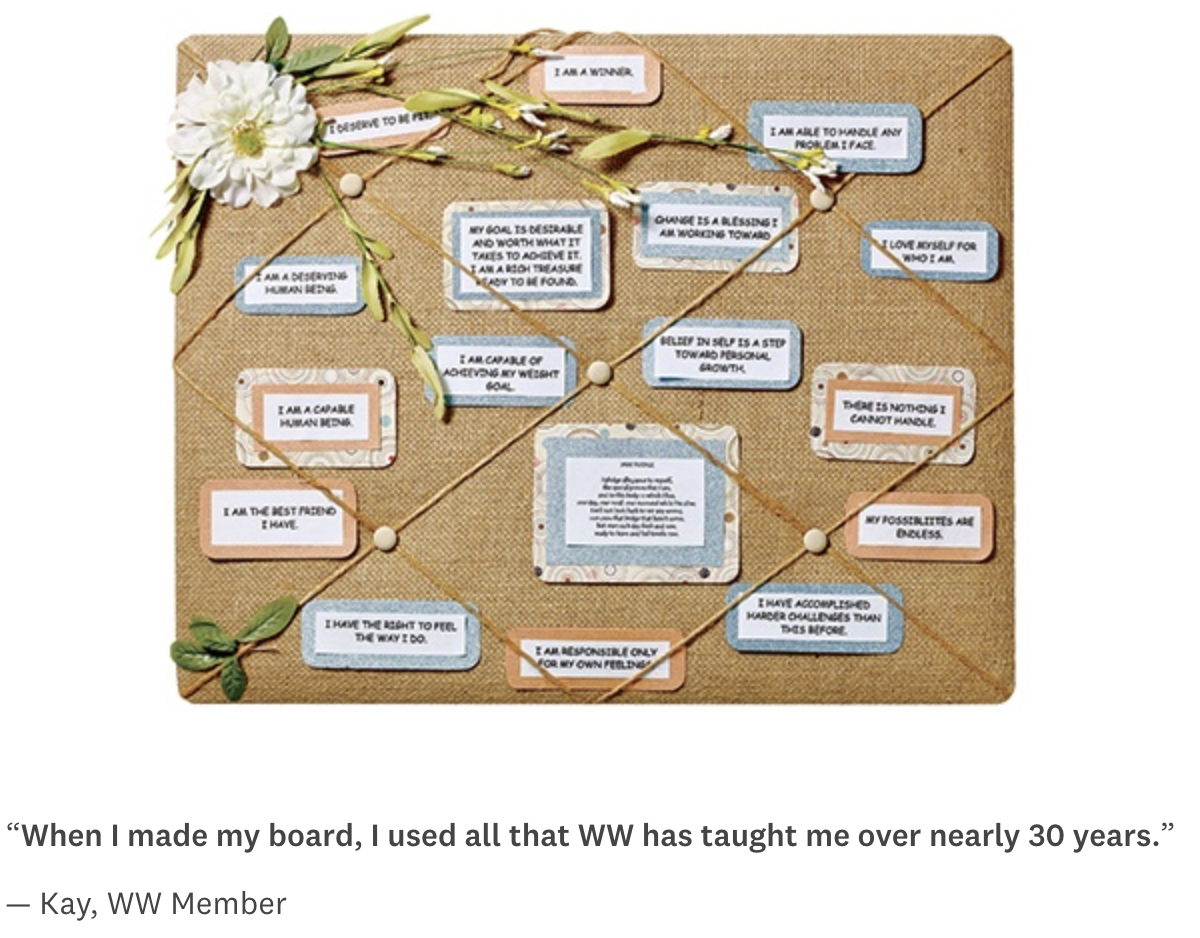
The bottom line: Why you should create a vision board
No matter where you are in life, you probably have a vision of where you want to be. A vision board can help break down that grand concept into smaller, more achievable steps, Dr. Burton says.
It can also help you figure out how to enjoy the steps along the way, Grupski adds. For instance, if your vision board is all about getting healthier, but you don’t enjoy running, don’t add running images—they probably won’t translate into something you’ll actually do. Instead, think about activities you actually like, and add visual representations of those.
Even better: Creating a vision board is tangible proof that you're working on yourself, Dr. Carmichael says—it’s something that should bring you pride. After all, if you don’t actively blueprint your future self into view, who will? You’ve got this!
--
Jessica DiGiacinto is a health and wellness writer and editor based out of New York, she’s contributed to Popsugar, Bulletproof 360, and Galvanized Media, among other media outlets.
--
This article was reviewed for accuracy in July 2021 by Allison Grupski, PhD, vice president for behavior change strategies & coaching at WW. The WW Science Team is a dedicated group of experts who ensure all our solutions are rooted in the best possible research.
Related articles
